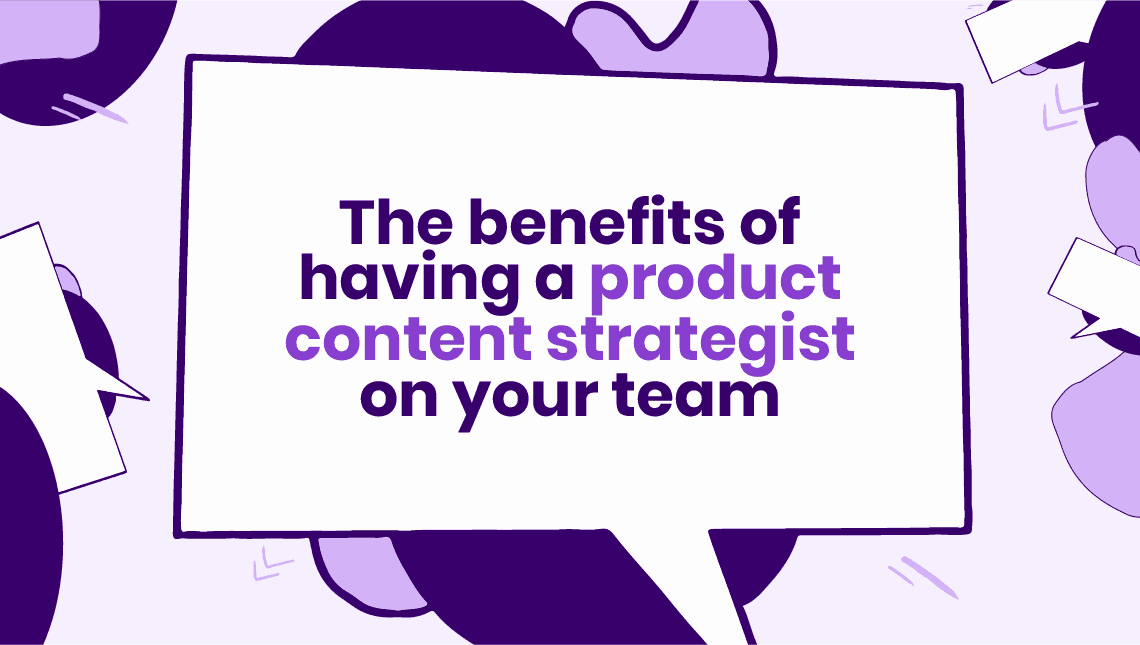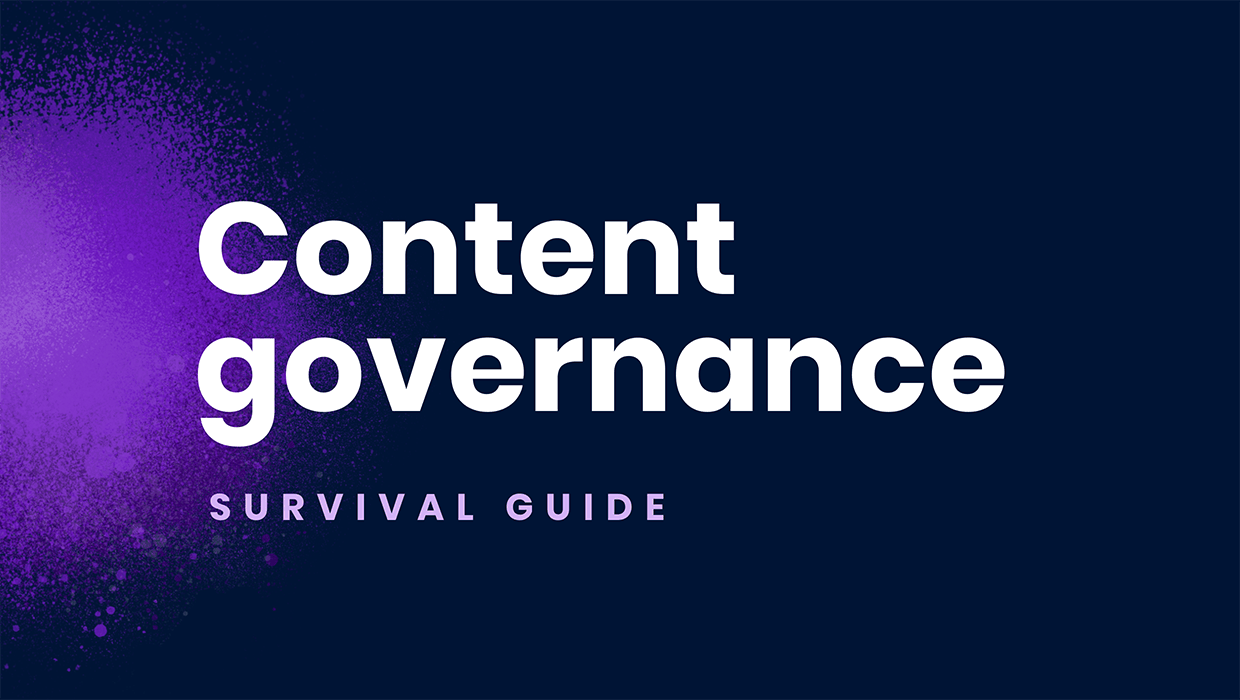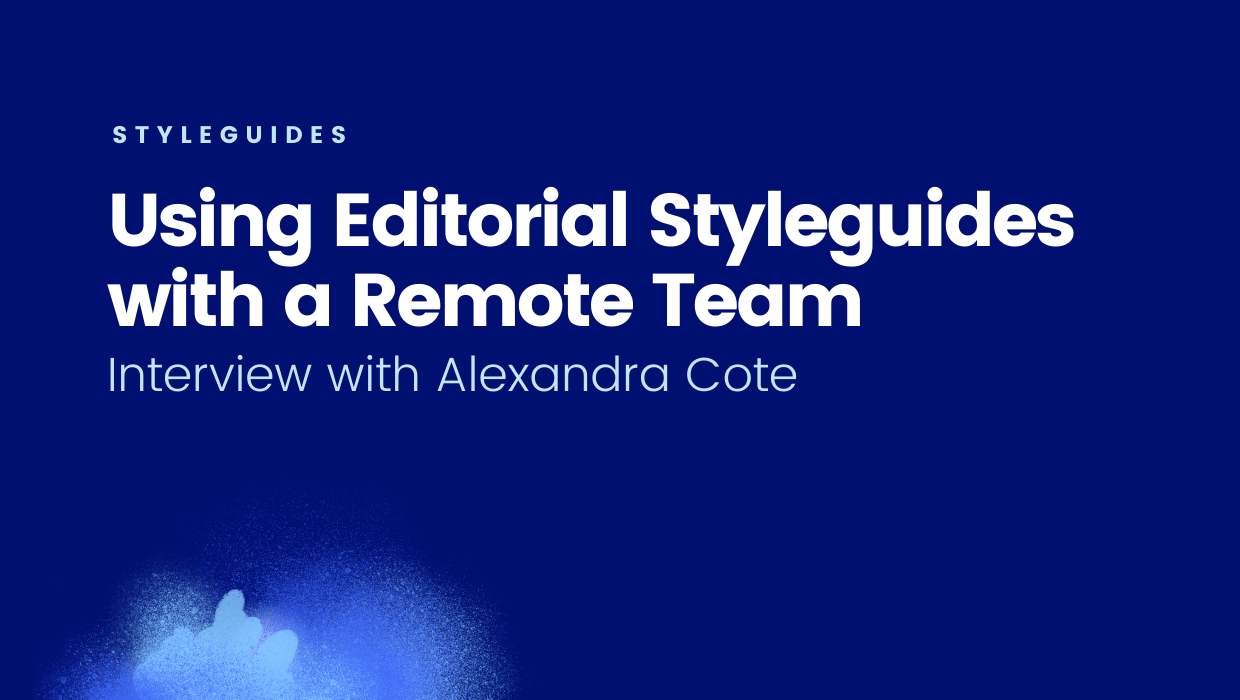Words at work
– 9 min read
Your basic content governance survival gear
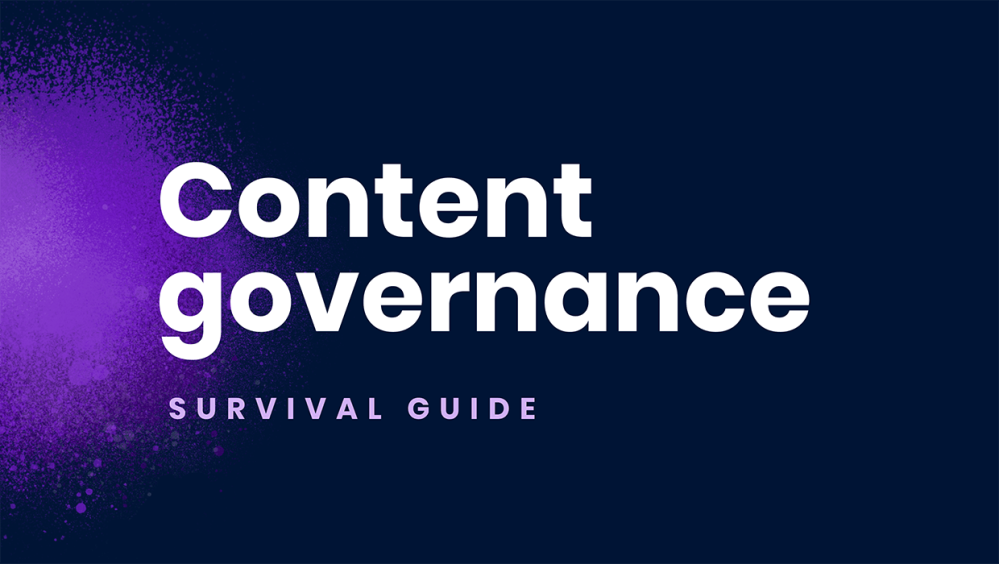
For the sixth year in a row, Domo has published its popular “Data Never Sleeps” report, detailing how much data is generated every minute. Some (kind of scary) highlights:
- Twitter users send 473,400 tweets
- Tumblr users publish 79,740 posts
- Instagram users post 49,380 photos
That’s six hundred thousand (602,520) new pieces of content per minute. Nearly one million (867,628,800) per day. Sixteen BILLION (16,684,512,000) per year. On just three channels. Big data has never felt bigger.
Now, think about how much content is created by an organization over the years — especially an organization with a large web presence or lots of digital and print support resources. It’s all too easy to drown in the amount of content created, often without fully understanding why it existed in the first place.
Hence, the importance of content governance systems.
“Content Governance is a mix of policies and processes, security, and editorial guidelines for producing content.”
Content governance helps teams make sure everything published by their organization is aligned in message, branding, purpose, and distribution. Great governance ensures that everything is what and where it belongs, able to be updated and deleted when necessary.
Necessities for successful content governance
This is truly a huge job for any content strategist when you consider every single person in an organization — from product, marketing, sales, support, HR, training, engineering — could all create content, to be consumed by the public or internal departments.
A combination of the right tools, processes, and people will make governance operations a success. From there, it’s up to you to decide how to effectively evolve your system as time goes on.
Here are three things that should be included in your content governance plan:

1. The right toolkit
There are so many platforms and so many templates that help people complete their work, each slightly nuanced in its user experience and functionality.
The best advice we can to those hunting for new solutions is to do your research and create a table for needs analysis. Along the left, outline your list of technical requirements or needs. Along the top, list the tools or templates you’re thinking about incorporating into your plan. Evaluate it for duplicative and missing functionality.
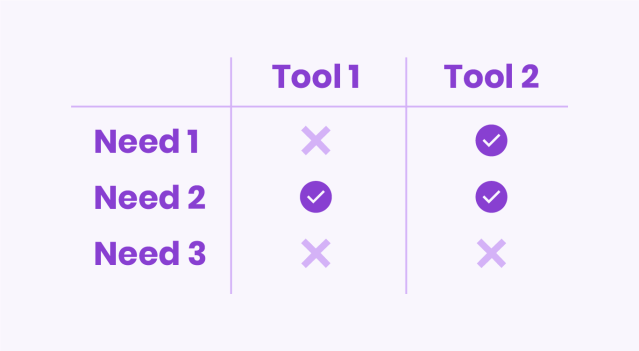
And if you start with only the basic toolkit, you’ll be in a good place if it includes these:
- Brand style guide — Guides the design and language used by your brand when speaking to your audience. This is especially helpful as a way to keep messaging aligned when more than one person creates content. Some brands have distinct style guides for different channels and/or audiences. Style guides keep your brand consistent, in order to establish your personality and build trust with your audience.
- Content templates — Informs the structure, needs, and goals of the content being written or reviewed. If you don’t know the who, what, where, when, why, how, and in what larger context, how can you be sure the piece should exist at all?
- Content intelligence — Scores and helps writers improve the copy by measuring the sentiment, voice, tone, emotional appeal, consistency with established goals, and more.
- Content management system (CMS) — Makes content easy to publish, update, move, and delete, whether you’re publishing externally or internally.
Digital content governance with WriterContent teams are managing, measuring, and improving their copy using the Writer platform. Start your free trial to see our:
|

2. Content preparation checklist
Before creation begins, run through this checklist to make sure everyone involved is aligned and the content is ready to perform.
☑️ Did you define ownership?
One of the biggest challenges with content is fixing outdated information. Assigning someone to own each piece can help make sure everything stays up-to-date. The owner could be the author. Or a different subject matter expert. Maybe it’s a team leader. Maybe it’s you.
☑️ Who will support the creation of this content?
The best way to avoid 11th hour scrambles (“Wait, all of this information is wrong! We have to update these 12 pages in the next 30 minutes.”) is to create a list of all the people that should be involved, provide reviews, and give final stamps of approval. This could include managers, SMEs, customers, market experts, and peers. It’s also smart to denote who is an optional supporting player, so they don’t become an unnecessary bottleneck if they can’t respond before the deadline.
☑️ Is there enough context?
Before writing begins, create a brief to make sure the purpose and goals are clear to the owner, the writer, and anyone who may review the piece.
Here’s the contextual information I personally include in content briefs:
- Context & research
- Owner (DRI)
- Supporters (Reviewers)
- Intended audience
- Distribution channels
- Style (consistent across pieces)
- Unique tone for this piece
- Possible titles
- Required points to include
- Publish date
☑️ Did anyone check the content for accuracy?
Again, you’re trying to avoid the 11th hour scramble here — so make a plan to check for accuracy in the 8th or 9th hour instead. Pinpoint the best person to provide the review, and block off time on their schedule to go through the piece together.
This includes: technical details, legal and regulatory requirements, pricing information, market messaging.
☑️ Does it meet your style guide requirements?
A brand style guide is one of our essential toolkit recommendations above. It helps maintain a consistent look & feel across anything your organization releases.
Compare your content to the established style guide to make sure you’re adding, not detracting, from your brand’s image and personality. Check against messaging preferences (e.g. use of specific language or opinions) and design details.
If the established style guide feels out-of-touch with what you think your audience expects and/or what you want to convey, that’s a sign that it’s time to revisit the style guide with the responsible team.
☑️ Is the process documented accurately?
One of the goals of great content governance for enterprise organizations should be creating sustainable, scalable processes. The only way to do that is by documenting your processes to make them repeatable, and continuously improving them over time. Especially in fast-moving businesses, failing to officially document your processes means you’ll waste time trying to perfectly recall what you did, what worked, what didn’t — and you’ll probably make the same mistake twice.
Your process should include workflows for handoffs, necessary checkpoints, cross-team collaboration and alignment, distribution, and analysis.
Processes don’t need to be static; in fact, they really should change and evolve as you find new efficiencies. Organizations that get stuck in a “this is how we’ve always done it” mindset are the ones who fall behind. But as processes change, just make sure someone is in charge of updating the documentation — and perhaps even includes the ‘why’, so future hires can quickly understand your system and progress.

3. Content maintenance
“The content is live! You’re done! You never have to look at that piece again!” said no content strategist ever. Here are some things you’ll need to think about after your content is published:
☑️ Distribution
It’s good hygiene to keep track of where content currently lives for public or internal consumption. Decide whether or not it should remain there — if not, archive or delete it.
Then, research and think about whether or not it be added elsewhere. Perhaps it should exist somewhere new, but in a different format (requiring new planning and creation). Look into your audience’s favorite and common “watering holes” to decide if the new distribution is worth the time and effort you’ll put in.
☑️ Refreshing information
As we’ve already touched on, the biggest problem with static content is that it gets old — and shelf life can be pretty short. How will you make sure your audience doesn’t find expired information?
Thanks to cool technology, some content strategists are implementing dynamic content so information “updates itself” based on user profiles (e.g. role, age, preferences, interests), time (e.g. the current date), or new numbers in your database (e.g. number of users).
If you’re still using static content, it’s good to have frequent checks in place to remind you to refresh it regularly. Examples include: dates, data, number of users, pricing information, technical how-tos, feature or product descriptions, logos.
- For many organizations, it makes sense to set “content maintenance alerts” just as you do for a car or a fancy coffee machine. One way to set this up is to put a reminder on the content owner’s calendar a specified number of months after a piece was last checked (e.g. review this piece 12 months from today).
- For some, it may make sense to check all content at once, on a specified date/week each year. But this is typically too intense a drain on an organization’s limited resources.
In case a content owner (i.e. reminder owner) leaves the organization, make sure there are processes in place to track the existence of and reassign the alerts.
☑️ Localization
If your piece has done well in its native language, think about localizing it to reach other target audiences for your organization. But, consider first:
- Is this a priority?
- Have you localized before?
- Will this support your company goals?
- Can your current team support the new effort?
- Does enough additional localized content exist to properly support it?
- Is this an important piece to consider for localization?
- Will the content still resonate?
- Will different culture norms impact the relevancy?
- Do companies/roles/processes you mention operate differently in the target culture?
- Did you reference local news or celebrities that are irrelevant for audiences in the target countries or languages?
Additional reading on content governance
Here are more reads to help you prepare to set up content governance templates:
- “Content Governance: Let’s Make It Work” by BrainTraffic
- “Principles of Content Governance” by GatherContent
- “Why Content Governance Is Key to Taming Content Chaos” by Claire Gibbons
- “A four step road map for good content governance” by GatherContent


